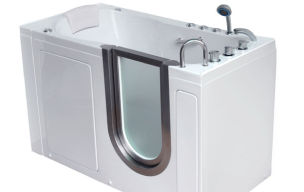Introduction
As we age, our homes become not just places of comfort but also significant financial considerations. Energy bills can be a substantial portion of monthly expenses, but with the right approach, seniors can make their homes more energy-efficient, reducing costs and contributing to sustainability efforts. In this guide, we'll explore home energy efficiency for seniors, offering valuable insights and practical tips to help older adults create eco-friendly, cost-effective living spaces. By implementing these strategies, seniors can enjoy a more comfortable home while reducing their environmental footprint and saving money.
1. Energy-Efficient Lighting
- 1.1. LED Bulbs: Replace traditional incandescent bulbs with energy-efficient LED bulbs. They use significantly less electricity, last longer, and produce less heat, making them safer for your home.
- 1.2. Motion Sensors: Install motion sensor lighting in frequently used areas like hallways and bathrooms. These sensors ensure that lights are only on when needed, reducing energy waste.
2. Proper Insulation and Sealing
- 2.1. Sealing Gaps: Identify and seal gaps around doors, windows, and vents. Weatherstripping and caulking can prevent drafts and maintain a comfortable indoor temperature.
- 2.2. Insulation: Ensure your home's insulation is adequate, especially in the attic and walls. Proper insulation helps maintain a consistent temperature, reducing the need for heating or cooling.
3. Efficient Heating and Cooling
- 3.1. Programmable Thermostats: Invest in a programmable thermostat that allows you to set temperatures based on your daily routine. This prevents excessive heating or cooling when you're not at home.
- 3.2. Regular Maintenance: Schedule regular maintenance for your heating and cooling systems. Clean or replace filters as needed to ensure they operate efficiently.
4. Energy-Efficient Appliances
- 4.1. Energy Star Ratings: When replacing appliances, look for the Energy Star label. These appliances meet strict energy efficiency guidelines and can significantly reduce energy consumption.
- 4.2. Unplug Devices: Unplug electronic devices and chargers when not in use. Even in standby mode, these devices can consume energy.
5. Smart Home Technology
- 5.1. Smart Thermostats: Consider smart thermostats that can be controlled remotely via a smartphone. This allows you to adjust your home's temperature settings, ensuring comfort and savings.
- 5.2. Home Energy Monitors: Install home energy monitors to track your energy usage. These devices provide real-time data, helping you identify areas where you can reduce consumption.
6. Energy-Efficient Windows
- 6.1. Double-Glazed Windows: If possible, upgrade to double-glazed windows. They provide better insulation and reduce heat loss during the winter months.
- 6.2. Window Coverings: Use thermal curtains or blinds to insulate windows. They can help maintain a comfortable indoor temperature year-round.
7. Solar Solutions
- 7.1. Solar Panels: Explore the possibility of installing solar panels on your roof. Solar energy can significantly reduce your reliance on traditional energy sources.
- 7.2. Solar Water Heaters: Consider a solar water heater system, which uses sunlight to heat water for your home. It's an eco-friendly and cost-effective choice.
Conclusion
Home energy efficiency for seniors is not just about saving money; it's about creating sustainable and comfortable living spaces that align with a green lifestyle. By implementing these energy-saving strategies, older adults can reduce their energy bills, lower their environmental impact, and enjoy a more comfortable home. Sustainability and savings go hand in hand, allowing seniors to enhance their quality of life while contributing to a greener, more sustainable future. Make these changes, and your home will become a model of efficiency and eco-consciousness for generations to come.



